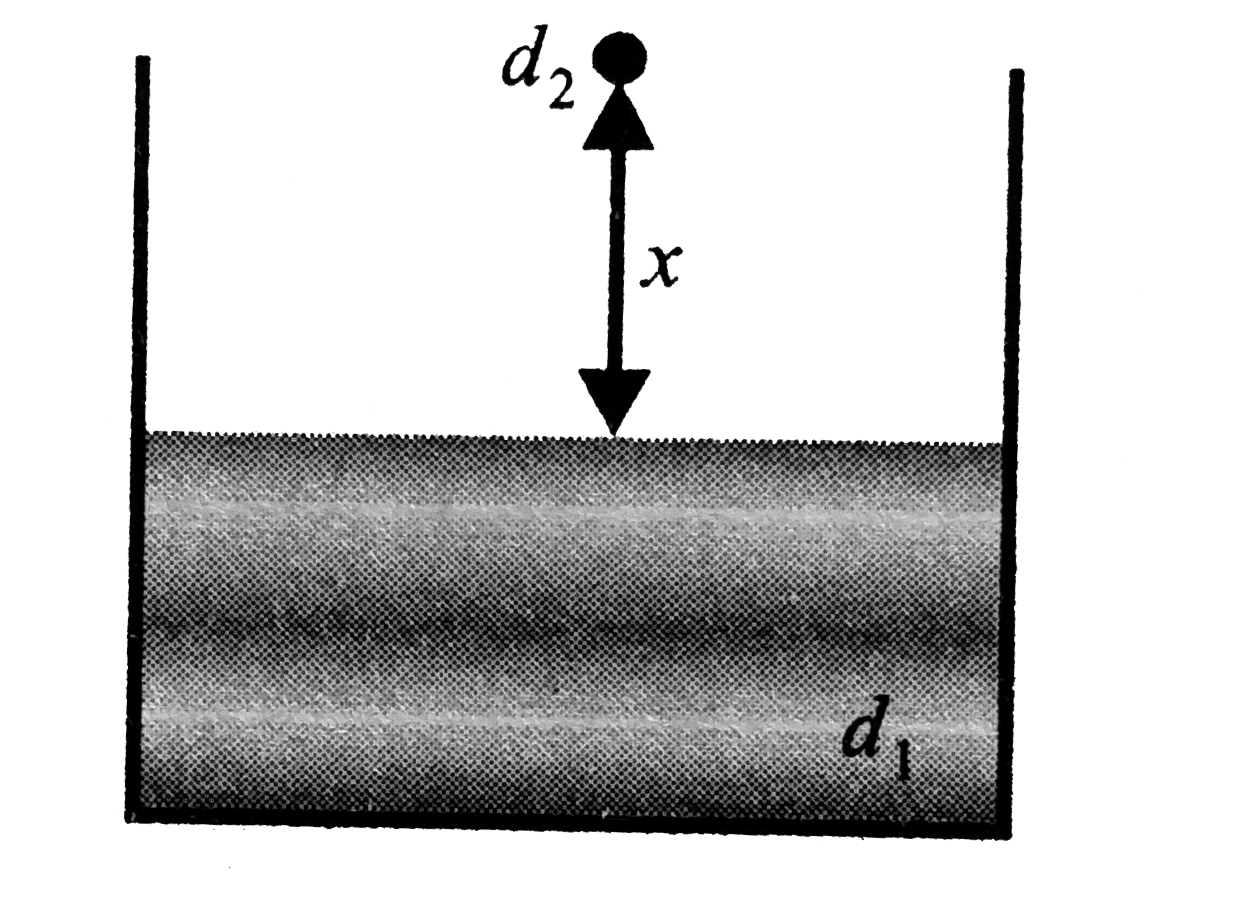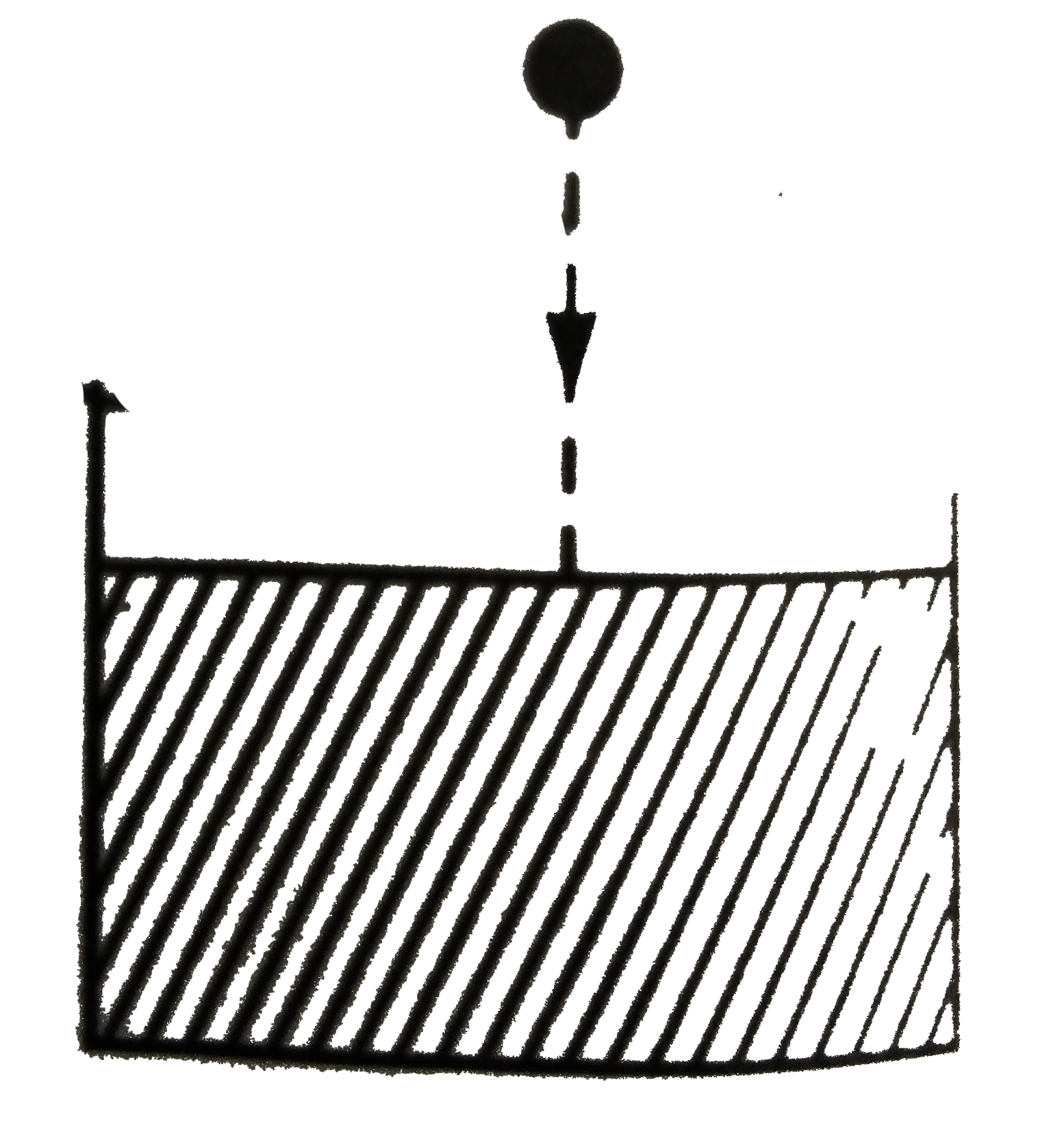body of density ρ is dropped from height h into a liquid having density σ(σ>ρ) .If the body just touches the of the container, then the distance of fallen would be proprotional to (Neglect viscous forces)
hσ−ρ
hσ+ρ
h×(σ−ρ)
hρσ−ρ
Bouyabt force F∝(σ−ρ)
∴ Decleration ∝(σ−ρ)⇒a=−k(σ−ρ)
Now, as initial velocity , u=√2gh
and final velocity .v=o
Distance fellen by the body ,
s=2gh2×k(σ−ρ) [∴s=u22a]
⇒ s∝hσ−ρ
Topper's Solved these Questions
- BOOK - BITSAT GUIDECHAPTER - FLUID MECHANICSEXERCISE - BITSAT Achives15videos
FLUID MECHANICS
- BOOK - BITSAT GUIDECHAPTER - ELECTROMAGNETIC INDUCTIONEXERCISE - All Questions33videos
ELECTROMAGNETIC INDUCTION
- BOOK - BITSAT GUIDECHAPTER - GAUSS LAW AND ELECTRIC POTENTIAL THEORYEXERCISE - BITSTAT ARCHIVES4videos
GAUSS LAW AND ELECTRIC POTENTIAL THEORY
Similar Questions
A small ball of mass m and density ρ is dropped in a viscous liquid of density σ. Ather some time the ball falls with a constant velocity. Calculate the viscous force acting on the ball.
View SolutionA body of density d2 is dropped from rest at a height x into a beaker having a liquid of density d1(d2>d1). Which of the following is/are true?
 View Solution
View Solution
Knowledge Check
- Question 1 - Select One
A body of density ρ is dropped from reat from a height h into a lake of density σ(σ>ρ). The maximum depth the body sinks inside the liquid is (neglect viscous effect of liquid)
Ahρσ−ρBhσσ−ρChρσDhσρ - Question 2 - Select One or More
A ball of density ρ is dropped from a height on the suraca of a non-visous liquid of dinsity 2ρ. Choose the correct options.
 AMotion of ball is periodic but not simple harmonicBAcceleration of ball in air and in liquid are equalCMagnitude of upthrust in the liquid is two times the weight of ballDNet force on ball in air and in liquid are equal and opposite,
AMotion of ball is periodic but not simple harmonicBAcceleration of ball in air and in liquid are equalCMagnitude of upthrust in the liquid is two times the weight of ballDNet force on ball in air and in liquid are equal and opposite, - Question 3 - Select One or More
A small body of density ρ' is dropped from rest at a height h into a lake of density ρ, where ρ>ρ’. Which of the following statements is/are correct if all dissipative effects are neglected (neglect viscosity)?
AThe speed of the body just entering the lake is √2ghBThe body in the lake experiences upward acceleration equal to {(ρ/ρ')−1}gCThe maximum depth to which the body sinks in the lake is hρ'(ρ−ρ')DThe body does not come back to the surface of the lake.
A body of density ρ is dropped from rest from height h (from the surface of water) into a lake of density of water σ(σ>ρ). Neglecting all disspative effects, the acceleration of body while it is in the take is
View SolutionIf rho is density of falling body and sigma is the density of fluid then the terminal velocity of the falling body is proportional to
View SolutionA small ball of density ρ is immersed in a liquid of density σ(>ρ) to a depth h and released. The height above the surface of water up to which the ball will jump is
View SolutionA body of volume V and desnity ρ is initially submerged in a non-viscous liquid of density σ(>ρ). If it is rises by itself through a height h in the liquid. Its kinetic energy will
View SolutionAn object of density σ(<ρ) is dropped from rest at a height h into a liquid of density ρ kept in a tall vertical cylindrical container. Neglect all dissipative effects and assume that there is no spilling of the liquid.
The time taken by the object to reach the starting point (from which it is dropped) isView Solution

